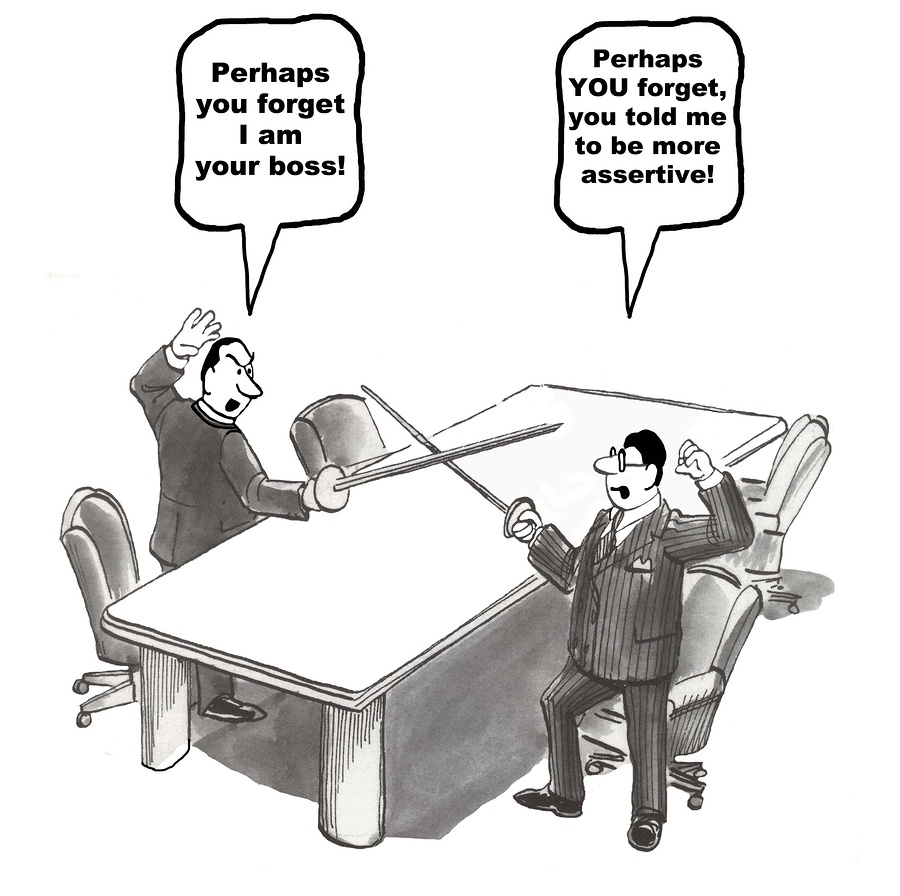How can DISC help you get off to a good start and achieve the results you want when calling your employee? 
What can you expect when calling your employees? If you're communicating the same way each time, don't expect the same interaction or outcome. Your employees have different ways of communicating.
DISC is a reinforcement tool; reminding you there are four different behavioral styles. Understanding what tends to motivate and how your employees prefer to communicate enables to tailor your style to achieve the results you want. Let's look at the styles of your employees.
D-styles
Your D-style employee is more decisive and individualistic. They have a goal and intend to get reach it as quickly as possible. When they get a call from you, the boss, the “D” instantly thinks “I’m getting that promotion,” or “now I can tell my boss how to manage this project”. They stride purposefully into your office, getting right to the task, "what do you need?"
Be prepared to answer their questions quickly, with specific action-oriented next steps. Don't spend too much time on chit chat. Stick to the facts, but don't overuse them. Give them options whenever possible so they maintain their sense of control.
I-styles
Your I-style employee is the social butterfly of the office. They thrive when they have a variety of interactions. They’re friendly and great fun to be around. When they get a call from you they’re excited at the opportunity to network. Your positive I-style may be thinking “I’m going to be recognized for what a wonderful a job I’m doing!"
When calling in your I-style, build in time to chat. Give them opportunities to speak and show enthusiasm. Don't overuse data and details. Motivate them more by focusing on the positive and using superlatives like "great," and "wonderful" in your feedback.
S-styles
Your S-style employee are laid back and personable. They like when things are steady and predictable. They tend view the world where the glass is 'half empty' versus 'half full'. When you call your S-style, their first reaction might be, 'Oh no. What’s wrong now? I’ll probably have to working late and miss my kid’s soccer game.'
Try to present clearly laid out plans and agendas; avoid surprises. Slow it down and provide assurance and support. Don't pressure them into making quick decisions. They want to hear your opinion and the viewpoints of their colleagues first. If you tell your S-style you're going to do something then recognize they see that as your promise to do it.
C-styles
Your C-style employee is prepared for anything, but the process takes longer than some may prefer. They are the perfectionists and therefore, organized and nit-picky. They’re systematic and detailed-oriented. When you call your C-style to your office, they arrive on time with their notepad, files, and spreadsheets in hand.
Consider sending your C-style an email detailing the meeting agenda. When they arrive, give them time to organize and answer their questions openly and factually. Slow it down, stay focused on the task, and give them time to think and decide. Don't forget to follow up and provide supporting data.
Final reminders
Your employees are more than their style. DISC helps you predict how they prefer to interact with you, but it doesn't identify their attitude, values, experience, or intelligence. Understanding what drives your DISC styles helps you succeed in better supporting your people’s success.
Click here to view our training videos.
